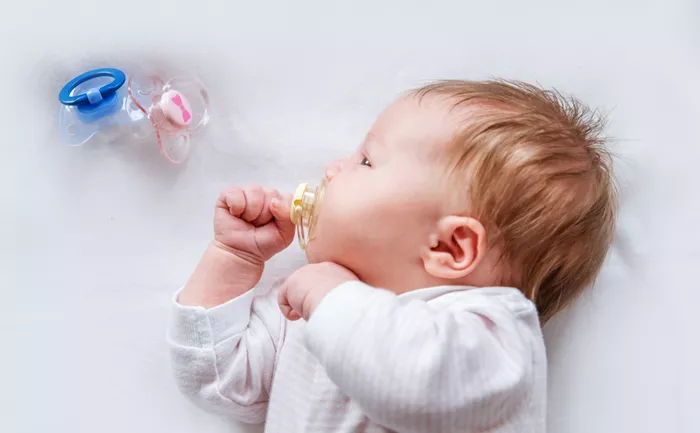Ann Arbor, MI — Many parents find it difficult to decide when and how to stop their child’s pacifier use or thumb-sucking, according to a new national poll by the University of Michigan Health C.S. Mott Children’s Hospital.
About half of parents say their child has used a pacifier, while a quarter report thumb or finger-sucking. These habits are known to calm babies and help them sleep, and they have medical benefits too. The American Academy of Pediatrics recommends using pacifiers during sleep to lower the risk of sudden infant death syndrome (SIDS).
“Sucking is a natural reflex in newborns,” said Dr. Susan Woolford, a pediatrician at U-M Health and co-director of the Mott Poll. “It helps with feeding and gives comfort during stressful moments.”
But as children grow, the benefits decrease. Long-term use can affect dental health and speech. Experts suggest phasing out these habits as early as six months to avoid problems like misaligned teeth or changes in mouth shape.
When and Why to Stop
Most parents notice their children use pacifiers or thumb-sucking at bedtime, nap time, or when upset. Some habits stretch into other times: nearly 10% of pacifier users and 25% of thumb-suckers rely on it while watching TV. About 18% of parents say their child used the pacifier almost constantly.
“These are normal self-soothing behaviors,” said Woolford. “But if they go on too long or interfere with daily life, it may show the child lacks other ways to cope.”
More than half of parents believe kids should stop these habits before age two. While many children quit on their own, others need help.
How Parents Are Helping Kids Quit
Parents have tried different ways to break the habits. For pacifiers, common strategies include:
- Limiting use to bedtime
- Hiding or pretending to lose the pacifier
- Explaining the child is too old for it
- Taking it away during distractions
- Cutting a hole in the nipple to reduce appeal
For thumb-sucking, some parents give children a stuffed toy as a replacement. Others use deterrents like hot sauce, Vaseline, or mittens. About 18% of thumb-sucking parents tried the toy method, and one in 11 used deterrents.
Woolford advises tailoring the approach to the child’s age and personality. Some kids respond well to books, videos, or sticker rewards. Others may do better with a “pacifier fairy” who takes the pacifier away permanently.
Offering a comforting toy can help with the transition, she adds. “As kids grow, they should learn new ways to calm themselves,” she said. “Parents should guide this change with patience and kindness, understanding that it can be an emotional process for the child.”
Related topics:


